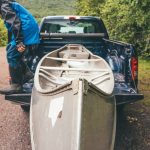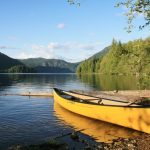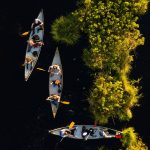Inflatable canoes are easy to transport and store. Here is our list of the best inflatable models to help you make the right choice.

Canoes have been used on the water for thousands of years. From fishing vessels to fur traders, they were the lifeblood of survival and industry that kept entire civilizations going.
Canoes in modern times are used in a more recreational way. Sure, there are people using them professionally, but we don’t tend to rely on them for survival in the same way as we used to.
With such a varied history, it’s hardly a surprise that different styles of canoe have sprung up around the world, and modern canoes are no different. With so many canoes on the market, it can be hard to tell which are designed for fishing, families, touring trips, or whitewater adventures.
This article is going to deep dive into the different types of canoes to help you choose the right style.
What is a canoe?
Chances are you already have an idea in your head of what a canoe looks like. There’s a good possibility that this image you have is a traditional, Canadian-style canoe, with an open top and two seats in it.
Okay, it might vary a little between being a wooden canoe, a plastic canoe, and the number of seats might vary, but we all have an idea of what we think a canoe looks like.
But they’re far more varied than that. In truth, the line between a canoe and a kayak is so blurred now that they’re in danger of crossing all the way over. The difference, in technical terms, boils down to two things.
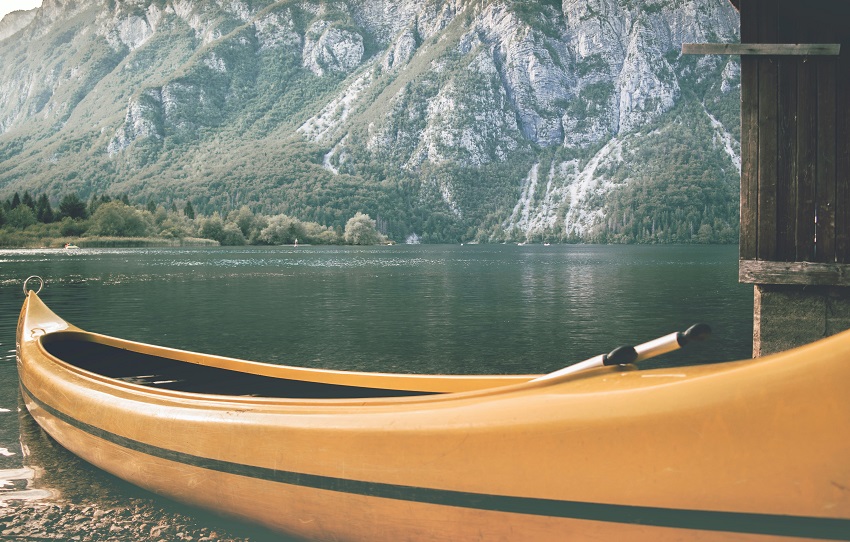
A canoe is designed to be kneeled in and propelled with a single-bladed paddle. It’s true that a lot of people choose to sit in a canoe, but the important thing is that the boat is designed with kneeling in mind. Equally, you can use double-bladed paddles in a canoe, but the design is built around single-bladed paddling.
Why are there different types of canoes?
Canoes, traditional style canoes that is, are often seen as a one-boat-does-all type of craft. Their versatility in a wide range of environments is what has seen them maintain their popularity for so many thousands of years.

But like kayaks, canoes come in a variety of styles. There are canoes for touring or tripping, canoes for white water, fishing, families, recreation, and even canoe sailing. While you can get one canoe that will do a little of all of these, the specialist models have the hull features — the width, length, rocker, and hull shape — designed specifically to excel in one particular environment. We’ll look at the specifics for each in their own section shortly.
Types of Canoe by Number of Seats
Before we look at the technical attributes of the different styles of canoe, we’ll start by classifying the different types of canoe by the number of passengers they’re designed to carry.
Solo Canoes
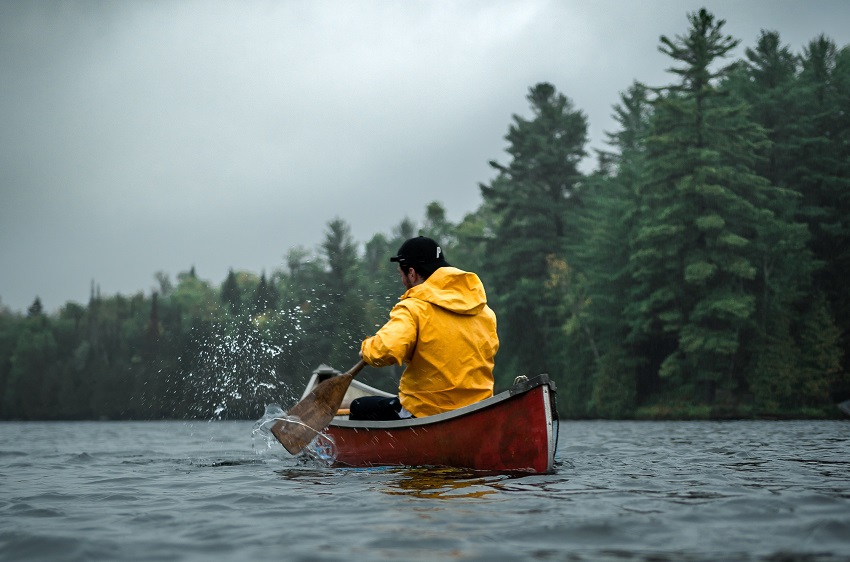
Solo canoeing is a specialist skill, taking practice to master the J-stroke and control your canoe. Solo canoes tend to feature a kneeling thwart, or an angled seat, just behind the central yoke. By positioning yourself nearer to the center of the canoe you gain optimal control and can affect both the front and the rear of the boat.
Solo canoes tend to range between 13 – 15 feet long. Shorter models tend to be slower, better suited to rivers and shorter journeys, while longer canoes are quicker but can be more challenging for a solo paddler to control, especially against the wind.
Tandem Canoe
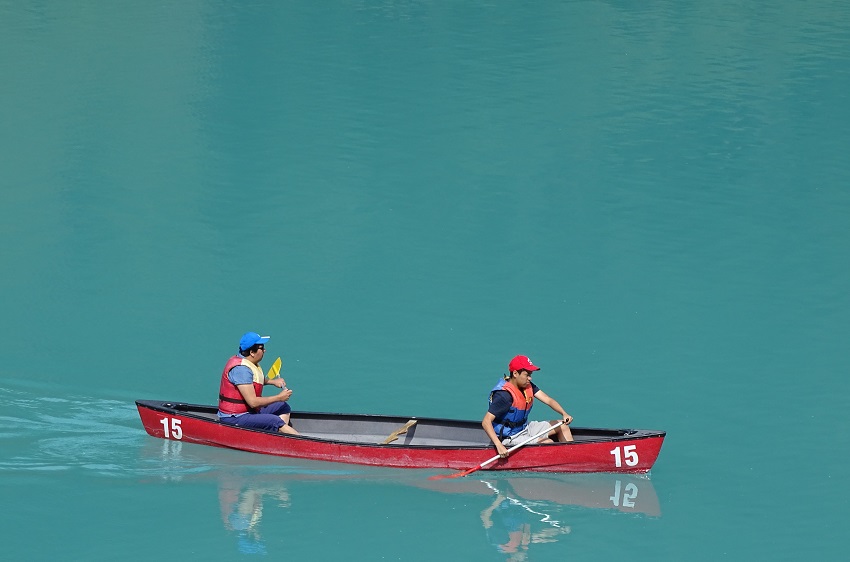
Tandem canoes are traditionally between 15 – 17 feet long. These canoes will have a seat at either end and can be paddled from a seated or kneeling position, depending on your preference. Most canoes that you see on the water — or in the store — are tandem canoes as these are by far the most popular style of canoe. 15-foot long tandem canoes can often also be paddled solo if there is a thwart fitted.
Three-Person Canoe
Three-person canoes are popular with families, training centers, or those who want the most versatility out of a single boat. Most three-person canoes have three fitted seats, but some have two permanent seats, then a space in the center to fit a temporary seat for when you need it.
This gives you an open deck when you want the extra storage, but the option of adding an extra paddler when you need it.
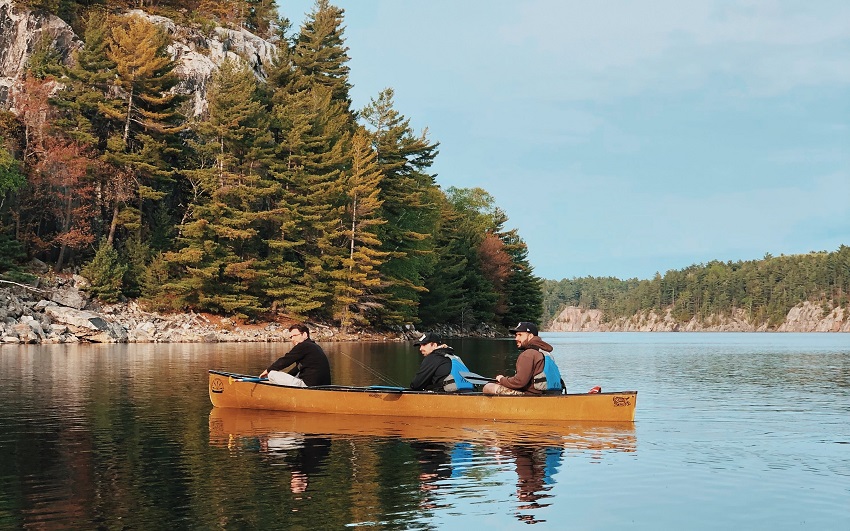
Three-person canoes tend to be between 16 – 18 feet long. It’s important to check that your chosen three-person canoe has a high enough weight capacity for your crew.
If you are adding an extra seat, make sure that you aren’t affecting the balance at the front or rear of the canoe – also known as the trim.
Types of Canoes
Recreational Canoe
Most canoes will fall into the recreational style. These are universal, do-all style models that are designed to withstand years of use and offer comfort and support and inspire confidence on the water.
This means that these canoes are all about primary stability, often having wide and relatively flat hulls that are easy to paddle.

Don’t let the term recreational fool you into thinking these canoes are only suited for beginners though. Some higher-end recreational canoes are popular among experienced paddlers, with their versatility and one-boat-fits-all concept allowing paddlers to delve into touring and river canoeing too.
Touring Canoe
Touring, or tripping, is all about moving efficiently through a range of environments. This usually means lakes but occasionally includes some gentle, lower-grade rivers. But there’s more to tripping than just the paddling though, there’s the portages, the camping, and the wear and tear on the equipment and on you.
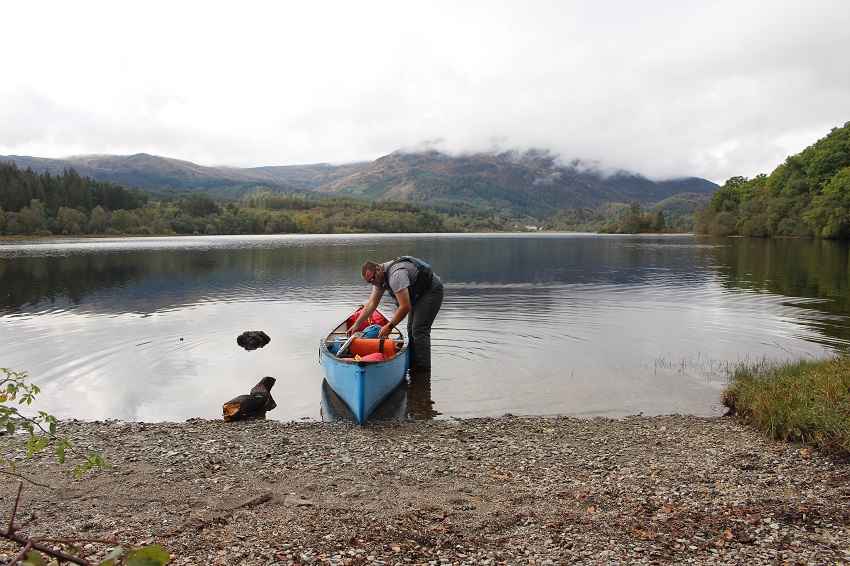
More expensive touring canoes are often made of composite materials, offering lightweight strength for easy carrying.
Touring canoes, then, are all about efficiency and strength, but you don’t want your touring canoe coming with too much weight. Most touring canoes are 15 – 17 feet long, with a balance of speed and turning, and are narrow when compared with recreational canoes. They can feel a little unstable for beginners and aren’t great for learning unless you’re committed to journeying.
Fishing Canoe
In contrast to touring canoes, fishing canoes are all about stability. Sure, they often have to cover a little ground to find the best spot, but when you’re there you want a canoe you can trust as you haul in your catch.
A little like recreational canoes, fishing canoes are often wider, with a focus on primary stability. They also often have padded, high-backed seats for hours of seated fishing.
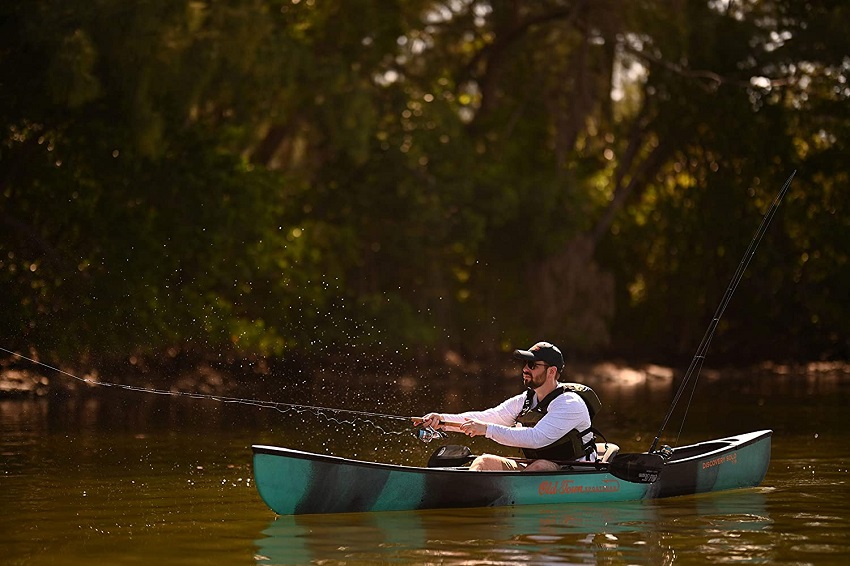
The best fishing canoes are stable enough to stand in and move around for a better command of the water. This stability also allows you to fit a motor without upsetting the balance.
While square sterned fishing canoes are usually motor-ready, you can always add an aftermarket transom — either gunwale-mounted or rear-mounted — if you have a canoe with a more traditional shape.
Whitewater Canoe
With practice, most canoes can be used in white water, but whitewater-specific canoes are easier to paddle through higher volume and tighter rivers.
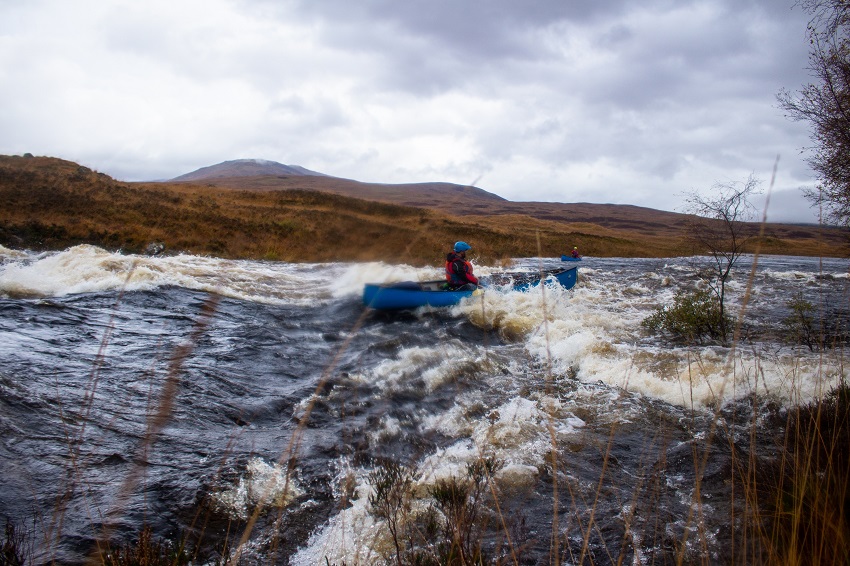
These canoes tend to have a reasonable amount of rocker, lifting the ends out of the water and making it easier to turn your canoe. They’re usually made from stronger materials too, designed to withstand the impact of rocks and riverbanks.
There are two styles of specialist whitewater canoes too. C1 canoes are the style that you see in the Olympic Canoe Slalom. These look a lot like kayaks but have an internal saddle rather than a seat. The paddler kneels in the canoe wearing a spray skirt, but paddles with a single blade.
OC1 canoes look like shorter, more rounded traditional canoes. These usually have a high rocker profile and are fitted with large airbags at either end to prevent the canoe from flooding as you paddle through waves or off drops.
Both C1 and OC1 canoes are only paddled by specialists and aren’t suited to varied environments or white water tripping.
Racing Canoes
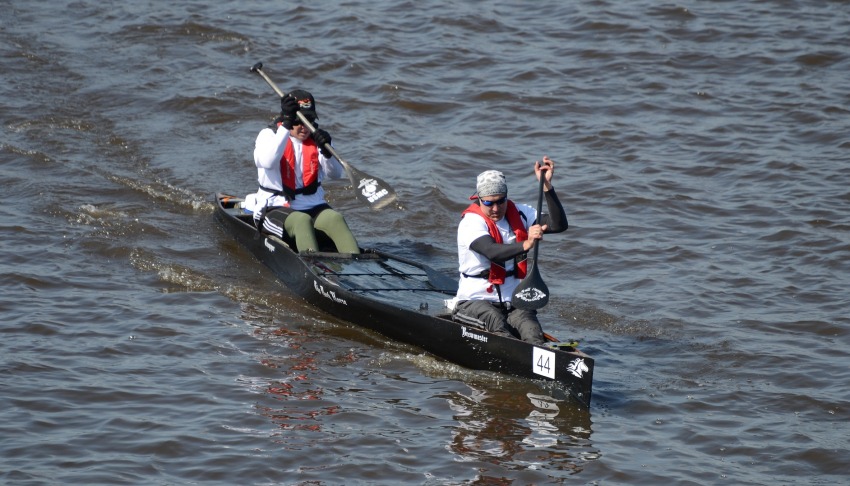
Marathon and sprint-style canoes, often seen in the Olympics, are also the domain of specialist canoeists. These canoes are long and narrow, with the look of a rowing shell. For beginners, these canoes are highly unstable and hard to paddle and are only designed to go in straight lines at high speeds.
As with the specialist whitewater canoes, you are unlikely to come across these unless you want to get into race canoeing.
Sailing Canoes
Sailing canoes are another specialist-style canoe. It’s true that with a sailing thwart and mast foot, you can fit a temporary downwind sail to most open canoes — these are great for tripping.
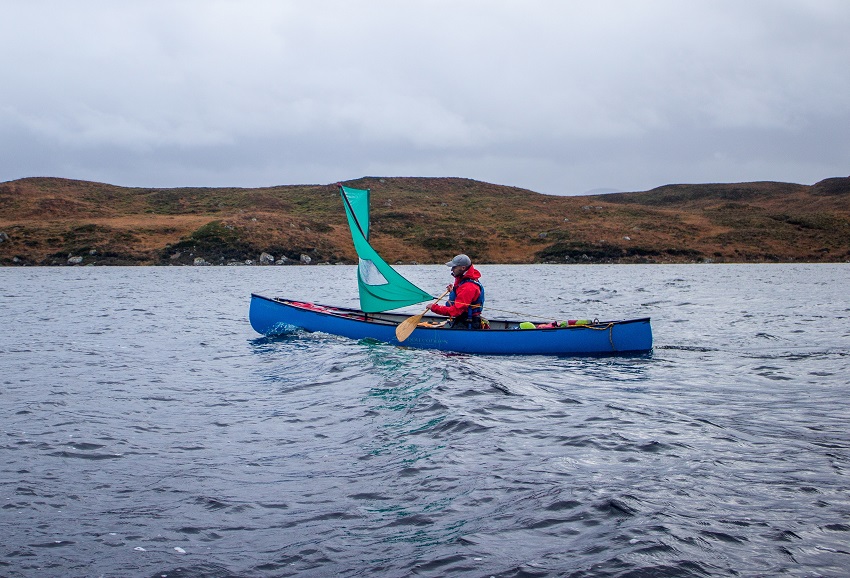
But proper canoe sailing is a little like dinghy sailing, where the sail is a more permanent feature and you fit your canoe with a daggerboard and a rudder.
These frames can either be added to a touring canoe, often used with an outrigger or a pair of outriggers for extra stability, or you can buy a specialist sailing canoe. These look like sailing dinghies and are built around speed and stability, designed to keel over and for you to use your body weight to counterbalance the sail.
What Are Canoes Made Of? Canoe Materials Explained
Plastic Canoes
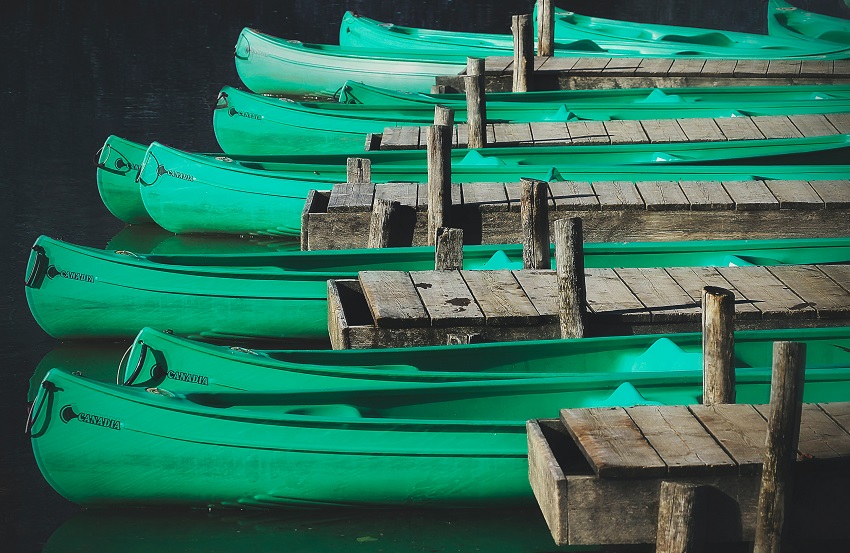
The majority of canoes on the market are now made of plastic. The majority are rotomolded, which is the cheapest style of production available and makes heavy-duty canoes that can withstand years of use.
Most recreational canoes and white water canoes, as well as plenty of touring canoes, are made from rotomolded plastic.
Alternatively, the more expensive ABS plastic canoes, made from layers of thermoplastic polymer, give you strength without excess weight. This makes ABS plastic canoes popular for longer trips, especially those with portages.
However, ABS canoes are more expensive than rotomolded plastic canoes due to the lengthy manufacturing process and pricier materials.
Inflatable Canoes
Inflatable canoes have improved enormously in recent years. Those collapsible style lilo canoes are far less common, with higher-pressure designs taking over. Inflatable canoes are excellent for canoeists with limited storage or transport room.
The best inflatable canoes are made with drop-stitching on the seams. This allows the canoe to be inflated to a higher pressure, almost to the point that they have the feel of a rigid-shelled canoe.
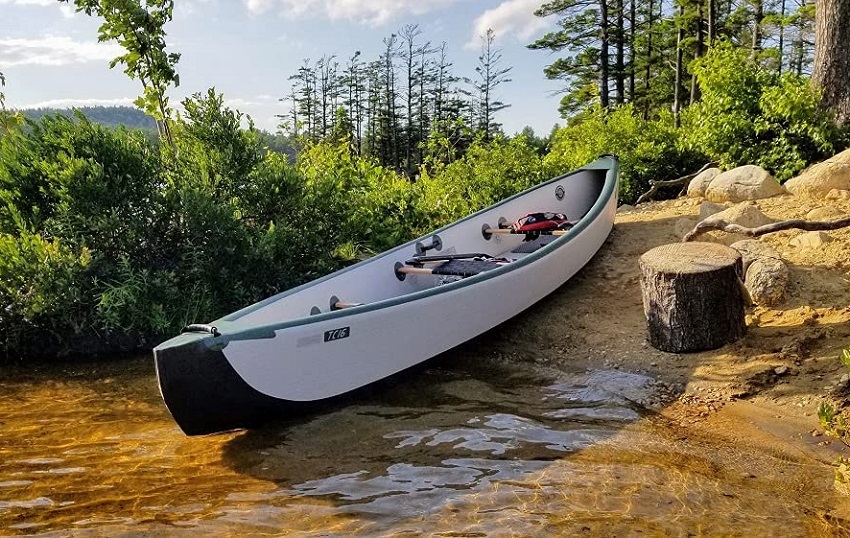
In fact, inflatable canoes are now durable enough and capable enough of being used in almost any environment.
The downside to inflatable canoes is their ability in the wind. Their lightweight, high-sided build means that they are prone to being blown around on the water. Their hull shapes are often less refined than plastic canoes too, and although they paddle similarly in calm conditions, they aren’t as capable in demanding water.
Composite Canoes
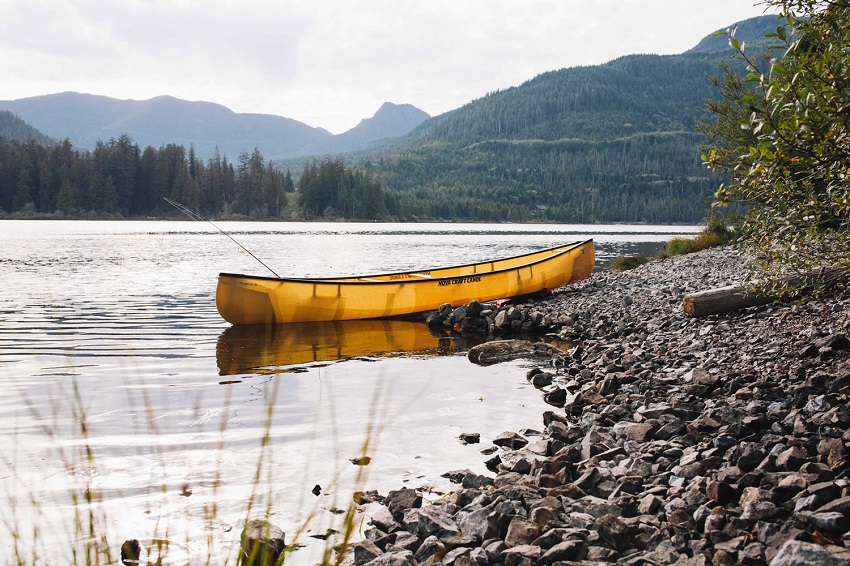
When weight is the most important factor of your canoe, you can’t go wrong with a composite design. These models have fiberglass or carbon woven through the plastic to give the canoe structure and rigidity without excess weight.
Composite canoes are especially popular with long-distance trippers who have long portages, but they aren’t suited to rocky rivers or rough ground.
Composite canoes are the most expensive on this list, and often the most breakable. They are undoubtedly the finest canoes to paddle though and are revered by many canoeists.
Wooden Canoes
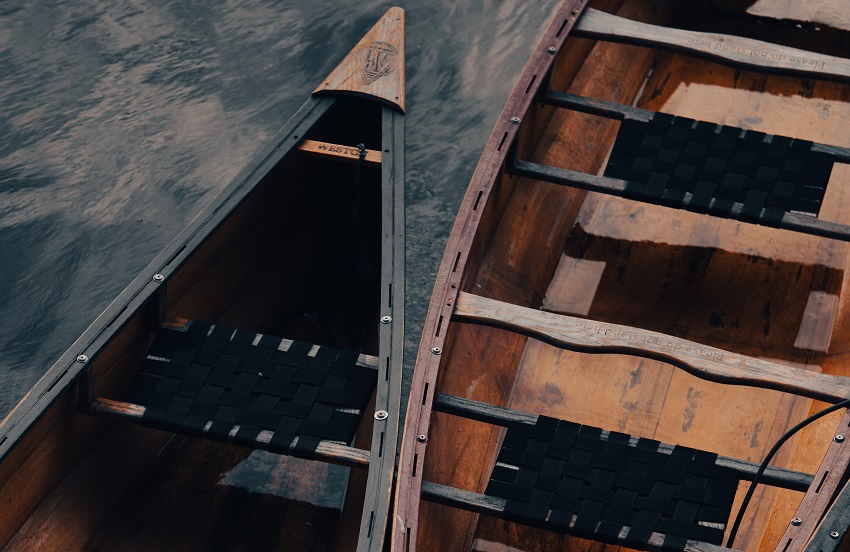
Wooden canoes quite simply look spectacular. Wooden canoes tend to be built around a frame, using thin layers of wood to build up a structure before being finished and varnished.
This build keeps them lightweight and helps them glide over the water, but they’re far less durable than modern materials, which has seen their popularity decline.
Aluminum Canoes
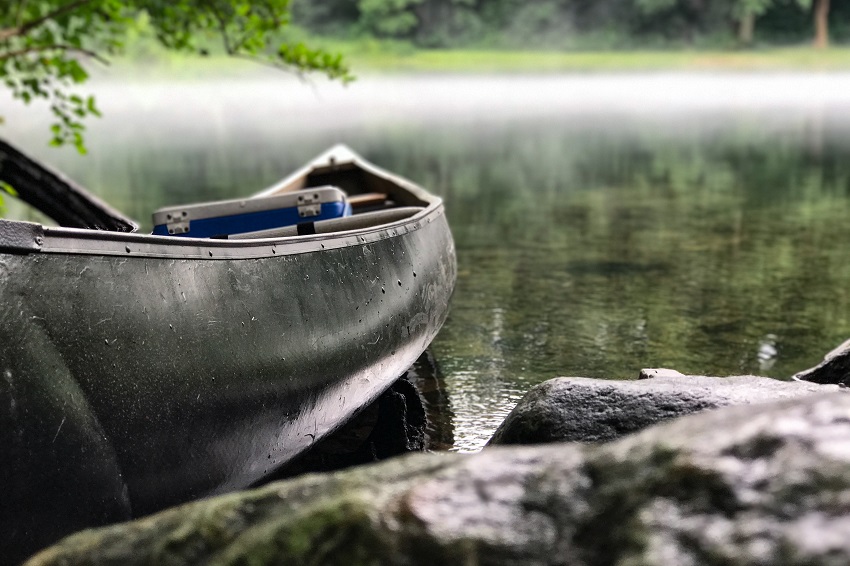
If you want a canoe that will last long enough that you can hand it down to your children and, most likely, your grandchildren, then get yourself an aluminum canoe.
Aluminum canoes tend to fall into the recreational market, though there are models for tripping and also for white water. These are durable and easy to fix but lack some of the refinement of plastic and composite canoes.
Aluminum canoes can also be noisy and in winter they feel cold, and no one likes having a cold butt.


